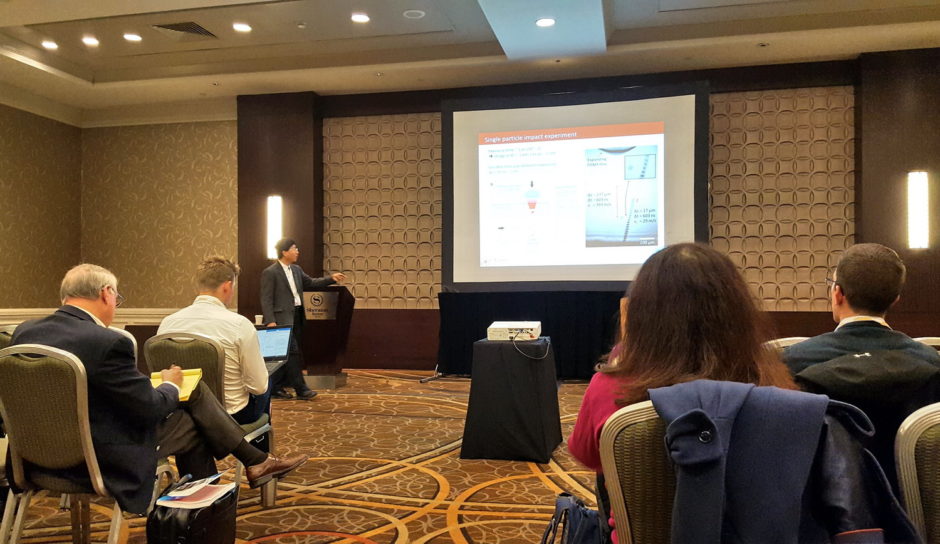Nov. 29: Prof. Lee gives a talk at MRS conference

Symposium MB2—Materials under Mechanical Extremes
Prediction of Extreme Dynamic Behaviors of Aluminum Microspheres in Supersonic Consolidation
Wanting Xie1,2, Arash Alizadeh3, Xuemei Wang4, Aaron T. Nardi4, Steven Kooi5, Victor K. Champagne6, Sinan Muftu3, and Jae-Hwang Lee1*
1Department of Mechanical and Industrial Engineering, University of Massachusetts, Amherst, Massachusetts 01002, USA.
2Department of Physics, University of Massachusetts, Amherst, Massachusetts 01002, USA.
3Department of Mechanical and Industrial Engineering, Northeastern University, Boston, Massachusetts 02115, USA.
4United Technologies Research Center, East Hartford, Connecticut 06108, USA.
5Institute for Solider Nanotechnologies, MIT, Cambridge, Massachusetts 02139, USA.
6Unitied States Army Research Laboratory, Aberdeen Proving Ground, Maryland 21005, USA.
Extreme materials science related to ballistic impacts are not only critical for defense applications but are also demanded for civilian applications such as cold spray techniques utilizing the kinetic consolidation of metal powders. Because the kinetic consolidation is based on continuous supersonic collisions of single micrometer-size metal particles to a desired target substrate, strong material nonlinearity and multiple deformation mechanisms are largely inter-coupled. Therefore, precise understanding of the kinetic consolidation has been a challenge due to the lack of a proper experimental method to simulate the microscopic supersonic collision event and corresponding numerical modeling. Here, we report precisely controlled single aluminum 6061 (Al) microsphere collisions at 50-1,000 m/s with both in situ and postmortem characterizations.
We performed highly-controlled single micro-sphere impact experiments, in which a single polycrystalline Al spherical particle was accelerated to a high velocity using the laser induced projectile impact test method. The size of each micro-sphere was measured prior to the impact experiment and an ultrafast optical microscopy system utilizing a femtosecond laser was used to quantify sphere’s impact and rebound speeds, vi and vr. By employing rigid (sapphire or Al2O3) and deformable (Al) target substrates, we created two different experimental environments, one-body and two-body plastic deformation cases, respectively. We observed several characteristic transition points in the trends of vr(vi) and the coefficients of restitution, Cr (vi), which were related to high-strain-rate responses of Al spheres and their bonding to the substrate. Post-impact dimensions, as a function of vi, indicated that the Al particle’s plastic deformation was created under very high strain rates order of 107 /s. The deformed particles were cross-sectioned using xenon plasma focused ion beam milling without gallium contamination. The high resolution cross-sectional electron micrographs and the electron diffraction backscatter diffraction mapping showed localized densification, extreme grain deformation, plastic flows across the grain boundaries, and bonding mechanisms. Since our experimental method significantly reduces the uncertainty in critical experimental parameters including the particle mass, impact speed, and impact temperature, demonstrated results provide the validation data to improve the accuracy of various numerical models.
